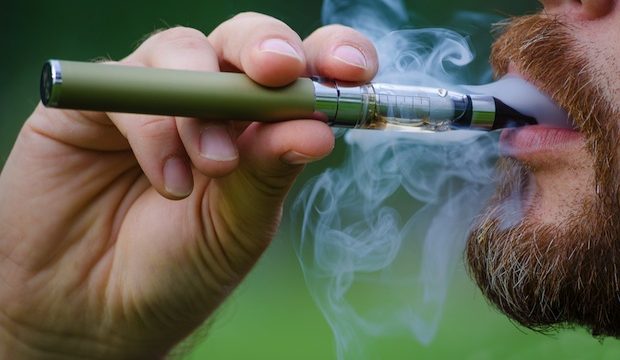Vaping Seems To Be Replacing Smoking, Not Luring People To It

This coming session our lawmakers will be considering legislation which would continue to treat vaping, or “e-cigarettes,” as though it were just like actual smoking. Already the state included vaping in its ban on smoking, now lawmakers will consider whether or not to ban smoking to minors.
As I’ve written previously, I don’t believe we should. While I wouldn’t describe vaping as good for you, it’s better than smoking, and given that some kids are always going to smoke why not allow them a much safer alternative that doesn’t seem to be any more dangerous than caffeine?
Today the Fargo Forum makes the opposite case, arguing that vaping is but a gateway to smoking:
There is no question e-cigs are a gateway to smoking among teens. New studies indicate that as more minors try e-cigs (up in several states), chances increase that they will try tobacco and get hooked. Nicotine, whether in an e-cig or a cigarette, is addictive. It should come as no surprise that big tobacco companies are in the e-cig business.
I’m not sure which “studies” the Forum is referring to, but I can point to a couple of studies which suggest the opposite. While e-cigarette use among kids is up, it seems to be displacing smoking not inspiring more of it.
Peter Suderman notes the particulars at Reason:
In the Monitoring the Future (MTF) survey, 17.1 percent of 12th-graders, 16.2 percent of 10th-graders, and 8.7 percent of eighth-graders reported using e-cigarettes in the previous month. By comparison, the CDC’s National Youth Tobacco Survey (NYTS) last year put the prevalence of past-month e-cigarette use among all high school students at 4.5 percent. Although the two surveys are not directly comparable, the gap suggests that past-month e-cigarette use by teenagers, which according to the NYTS tripled between 2011 and 2013, continues to rise. But at the same time, both surveys show that smoking among teenagers continues to fall. In fact, the rates of past-month cigarette smoking among eighth-graders, 10th-graders, and 12th-graders in the MTF survey—4 percent, 7.2 percent, and 13.6 percent, respectively—are lower than ever before in the history of the study, which began in 1975. Furthermore, as Bill Godshall of Smokefree Pennsylvania points out, the drops in past-month cigarette smoking between 2013 and 2014—11 percent, 21 percent, and 17 percent, respectively—are the largest such decreases ever seen.
Given these data, it hardly seems reasonable to conclude that more vaping means more smoking.
It doesn’t. In fact, it seems much more reasonable to conclude that vaping is providing a safer alternative to smoking.
Crusading against tobacco has become a causus belli for progressives in the same way that the prohibition of alcohol was for the progressives of another area. It seems to have morphed from a public health campaign into a power grab.
If the anti-smoking zealots were concerned about public health, they’d welcome vaping as a safer alternative promoting a net increase in public health. But instead they detest it. Because it sort of looks like smoking, even though it isn’t, and their knee-jerk impulse is to destroy anything which looks like smoking.




